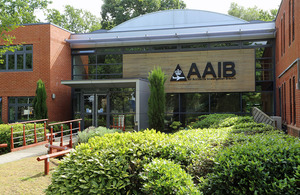Evaluation of remote hearings during the COVID-19 pandemic published
News story
Evaluation assesses experiences of public users, the judiciary, legal representatives and staff.

The COVID-19 pandemic resulted in a radical and swift transition to the widespread use of remote hearings – where some or all participants attend by video or audio rather than in-person to ensure justice continued to be served.
Today we published an evaluation of remote hearings during the COVID-19 pandemic research report. This reports the experience of public users, the judiciary, legal representatives, HMCTS staff, and support professionals and their attitudes towards remote hearings.
Key findings include:
- public users attending remotely were slightly more likely to be satisfied with the overall experience of their hearing than in-person users (benefits included greater convenience, reduced costs and removing the anxiety of being in a room with another participant, who they may be in conflict with)
- legal representatives were positive about remote hearings, with 93% saying they felt remote hearings were an acceptable alternative during the pandemic (views were mixed about how they should be used in the future)
- 51% of judges thought remote hearings were effective at creating an environment comparable to in-person hearings, but raised concerns about their impact on well-being and increased workload
The evaluation also recommended more support for vulnerable users and increasing awareness of the support available to public users when attending a remote hearing.
We’ll use the evaluation findings to plan developments to our services. Some of the findings have already been addressed by the new Video Hearings service that will replace the Cloud Video Platform (CVP). CVP was rolled out quickly in response to COVID-19 and has been widely used to run remote hearings. During 2022 we’ll move away from CVP to the more comprehensive Video Hearings service.
The Video Hearings service was developed as a bespoke, multi-functional service built specifically for court hearings as part of the HMCTS Reform programme. The service is designed to meet the specific needs of court and tribunal hearings and addresses some of the recommendations found in the report.
The Video Hearings service better reflects the formality of a court hearing and improves on the services used during the pandemic. For example, it provides virtual consultation rooms and built-in guidance for court users.
The decision to hold a remote hearing remains at the discretion of a judge who will decide if it is in the interests of justice. We’ll continue to support the judiciary to conduct hearings using their choice of remote and in-person hearings.
Published 10 December 2021


